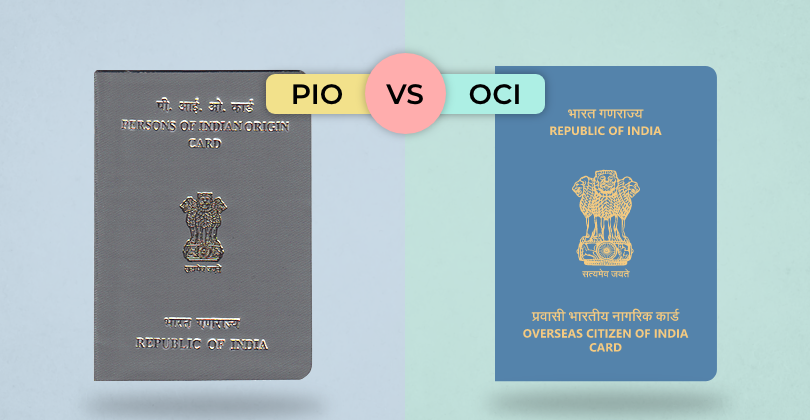Are you of Indian origin and living abroad? You've probably come across terms like PIO and OCI. These cards offer different benefits, but it can
If you find yourself drowning in a sea of debt, the idea of loan restructuring might offer a lifeline. Loan restructuring involves altering the terms of your loan agreement to make payments more manageable. This could mean extending the loan term, lowering the interest rate, or even reducing the total amount owed. In this detailed guide, we'll explore the various forms of loan restructuring, understand how the process works, and discuss when it might be a viable option for managing personal debt.
What is Loan Restructuring?
Loan restructuring is a financial strategy employed by individuals, companies, and even countries to avoid defaulting on existing debts. It serves as an alternative to bankruptcy, providing a mutually beneficial solution for both the borrower and the lender. The process involves negotiating changes to the existing loan terms and offering relief to the borrower in financial distress.
Different Ways of Loan Restructuring:
-
Debt for Equity Swap
In this scenario, creditors may choose to forgive a portion of the outstanding debt in exchange for equity in the company. This approach is often employed by companies with substantial assets and liabilities, where bankruptcy would yield little value for creditors. By allowing the company to continue operations, creditors become stakeholders, though the original shareholder base may see a reduction in their stake.
-
Bondholder Haircuts
Companies with outstanding bonds negotiate with bondholders to repay the debt at a discounted level. This can involve reducing or omitting interest or principal payments, providing a way for companies to alleviate their financial burdens.
-
Informal Debt Repayment Agreements
A more direct approach involves companies reaching out to creditors directly to negotiate lenient repayment terms or even writing off portions of their debt. This informal method is cost-effective and relies on the willingness of both parties to reach a feasible agreement.
-
Loan Modification
Loan modification entails the creditor changing various terms of the loan, including monthly payment amount, interest rate, or repayment term. These adjustments aim to make payments more affordable, allowing borrowers to regain financial stability.
-
Loan Repayment
Negotiating a formal or informal repayment agreement with creditors can provide temporary relief. An informal agreement maintains the original repayment terms but offers a new repayment plan for a predetermined period. Formal repayment agreements involve signing a legally binding contract with a new repayment plan.
-
Debt Settlement
For those facing extreme financial hardship, debt settlement allows for the payment of a reduced amount, typically through a lump-sum payment. However, this option may only be available if bankruptcy is the sole alternative.
The Loan Restructuring Process
-
Assess the Situation
Start by thoroughly examining your financial records to understand your financial standing. This includes analysing outstanding debts, recurring monthly expenses, and recent account statements to grasp the overall picture.
-
Calculate Affordability
Before contacting lenders, determine how much you can realistically afford to allocate towards debt repayment each month. This information will be important when discussing restructuring options.
-
Contact Creditors
Being proactive is key. Reach out to your lender at the earliest signs of financial strain. Creditors aren't obligated to agree to restructuring requests so that early communication may improve your chances.
-
Weigh Options
If a lender agrees to explore restructuring, various options may be presented. This could include adjusted interest rates or repayment terms. Consider each option carefully, weighing the impact on your financial situation.
-
Negotiate Terms
Don't hesitate to negotiate the terms of the restructuring offer. This could involve discussions on payment amounts, fees, or accrued interest. Clear communication may lead to a more favourable agreement.
-
Accept New Terms
If both parties reach an agreement, formalise the arrangement by accepting and signing the new terms. Once accepted, you commit to following through with the new agreement and continuing your debt payments.
Pros and Cons of Loan Restructuring
| Pros | Cons |
|---|---|
| Can help if you're struggling with payments | Can hurt your credit: Restructuring may lower your credit score, especially if the debt is marked as settled for less than what you owed initially. This impact can stick around for a while. |
| May prevent default on loans | Not guaranteed: Your lender may or may not agree to restructure your debt. It's not a sure thing, even if you ask. Defaulting, on the other hand, can lead to closed accounts and credit report problems. |
| Doesn't need excellent credit | Takes time and effort: Restructuring isn't a quick fix. It involves negotiations with your creditors to figure out a plan that fits your budget. Despite the hassle, many folks facing money troubles find it worthwhile. |
| Pros | Cons |
|---|---|
| Can help if you're struggling with payments | Can hurt your credit: Restructuring may lower your credit score, especially if the debt is marked as settled for less than what you owed initially. This impact can stick around for a while. |
| May prevent default on loans | Not guaranteed: Your lender may or may not agree to restructure your debt. It's not a sure thing, even if you ask. Defaulting, on the other hand, can lead to closed accounts and credit report problems. |
| Doesn't need excellent credit | Takes time and effort: Restructuring isn't a quick fix. It involves negotiations with your creditors to figure out a plan that fits your budget. Despite the hassle, many folks facing money troubles find it worthwhile. |
When Should You Restructure Your Personal Loan?
Consider loan restructuring when facing financial difficulties like reduced income or an inability to meet loan obligations. It provides a way to manage repayments effectively, preventing default or financial hardship. Loan restructuring is suitable for temporary setbacks where short-term relief is needed.
Impact of Loan Restructuring on Credit Score
While loan restructuring provides relief for borrowers, it does have consequences for credit scores and eligibility. Restructured loans are reported in the 'settled' or 'written off' section, negatively affecting credit scores. Lenders may view restructured loans as indicative of wilful defaulting, impacting a borrower's creditworthiness.
Though borrowers may not prevent the impact on credit scores during loan restructuring, efforts can be made to improve credit scores over time. Previously, banks could restructure loans only after they turned into Non-Performing Assets (NPAs). Despite the potential credit score impact, borrowers can work towards improvement as they navigate this unique financial situation.
Conclusion
Loan restructuring is a viable option for those grappling with overwhelming debt. Understanding the various forms of restructuring, the process involved, and the potential impact on credit scores empowers borrowers to make informed decisions. While it may not be a perfect solution, loan restructuring offers a lifeline to navigate financial challenges, providing an alternative to more drastic measures like bankruptcy. As with any financial decision, it's crucial to assess individual circumstances, weigh the pros and cons, and seek professional advice when necessary.
AUTHOR
KreditBee As a market leader in the Fintech industry, we strive to bring you the best information to help you manage finances better. These blogs aim to make complicated monetary matters a whole lot simpler.







